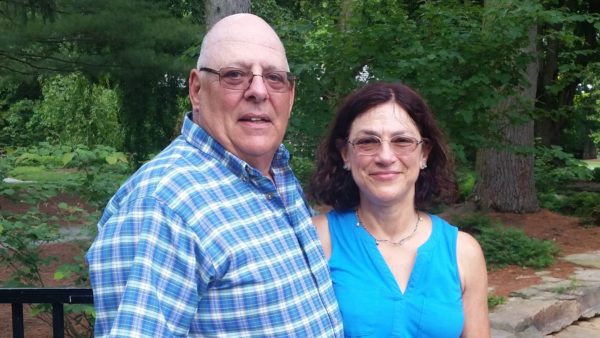
You may be aware of the IPPF’s advocacy efforts. Now, we need you to advocate, too. Your story is important and shows that rare disease not only affects Americans, but Americans in your district. Your story proves to congressional members that their decisions have a great impact on human life and well-being. The IPPF encourages you to participate in bringing awareness of issues and legislation that affect the rare disease community to your state and federal representatives.
This may seem like a daunting process, but the IPPF is here to help. We have tools to support you as you prepare to speak with legislative members. One of the most important things to remember is that legislators are people, too. Look for common ground—they are parents, brothers, sisters, and friends. Statistically, they almost certainly know someone with a rare or autoimmune disease.
The following suggestions can help you to successfully become an advocate:
- Contact the IPPF at advocacy@pemphigus.org to express interest in advocating at a local and/or national level. We can explain issues and legislation that the IPPF currently supports.
- Identify your federal lawmakers by using the online tools at senate.gov (US Senate) and www.house.gov (US House of Representatives).
- Monitor the congressional calendar. District work periods are the best time for lawmakers to meet with local constituents. Take advantage of the August recess. This is a busy time when many lawmakers hope to meet with their constituents to learn about issues affecting them and what they can do to help.
- Schedule an appointment by sending a formal invitation to the lawmaker’s scheduler at least three to four weeks in advance of the proposed meeting date. Check your lawmaker’s website, as they may have a formal process for submitting meeting requests.
SAMPLE EMAIL TEMPLATE
Dear [Name],
I am writing to request a district meeting with (insert elected official here). As legislators increasingly play a role in shaping health care policy that impacts my access to quality and affordable care, I welcome the opportunity to discuss with you some of my challenges and opportunities patients face when caring for themselves.
I am available to meet with you on (suggest a few dates that work for you). If those dates do not work for you, I am happy to discuss other options with your staff. I can be reached at (insert phone number) or at (insert email).
Sincerely,
[Your Name]
[Your address]
About a week later follow up with a phone call.
PHONE CALL TALKING POINTS TEMPLATE
Hello, my name is [Your Name].
I’m a patient with pemphigus/pemphigoid in [Your City, State].
I’m following up on a written invitation I sent to [Name of Elected Official] wishing to speak with him/her to discuss issues facing patients like me when trying to obtain quality and affordable healthcare and prescriptions.
I would like to schedule an opportunity for [Name of Elected Official] to visit their office in the next three to four weeks. Do you have any availability?
(If they need time to check on the schedule, give them your name, email, and phone number. Be flexible. If they are unable to meet on the date(s) you suggested, discuss other options with them.)
Ask them if there is any required paperwork you need to submit prior to the meeting.
Thank you for your time, and I look forward to meeting [Name of Elected Official] at their district office.
THE VISIT:
- Understand the issues you are about to discuss. This is your story and it is important to use your experiences as compelling evidence of the issues at hand.
- Share your concerns with your elected official. If available, use the handouts that the IPPF provides on the policy or regulatory issue.
- Get to the point. Don’t take too long to make your pitch. Tell them who you are, the community you represent, the number of patients with our disease, what your primary concerns are, and how and why these concerns are related to a certain piece of legislation or regulatory requirement.
- This should be conveyed in about 10 minutes.
- If they ask a question and you are unsure of the answer, please say so and let them know you will find out and get back to them. The IPPF is happy to help you find the information.
- Double-check your facts and figures. Make sure that you are presenting accurate information.
- Thank your elected official for specific votes and efforts where they have supported legislation that helps our community.
- Take a photo with the elected official and their staff. Please share it with the IPPF. We love to post photos of our community participating in advocacy efforts.
Follow up by thanking your elected official for the visit.
THANK YOU NOTE TEMPLATE
Send by email or regular mail.
Dear [Name],
Thank you for taking the time to meet with me on [insert date].
As a constituent, I appreciate the opportunity to tell you about my disease and to share my story with you to see the impact healthcare policy has on patient access to care. It was an honor to meet you.
[Insert main points from the meeting as a way to reiterate your position.]
Please do not hesitate to contact me at [your phone or email address] if you have any further questions regarding [insert legislation or regulation name]. I welcome the opportunity to serve as a resource for you on these important issues.
Sincerely,
[Your Name]
Follow up with IPPF staff. Share any action items resulting from the meeting with the IPPF advocacy team by phone or email.
We hope this helpful guide encourages you to get you involved in advocating for our community and for those who cannot advocate for themselves. We are always looking for new ways to advocate for the IPPF community and would appreciate any feedback.





